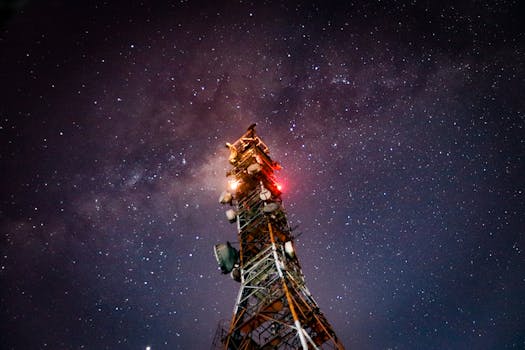
MEO Satellites: Revolutionizing Global Communication with Medium Earth Orbit Technology
MEO satellites, or Medium Earth Orbit satellites, are a type of satellite that operates at an altitude of around 2,000 to 36,000 kilometers above the Earth’s surface. This is significantly lower than the Geostationary Orbit (GEO) satellites, which are stationed at around 36,000 kilometers above the equator. The MEO satellites are designed to provide faster and more reliable communication services, making them an attractive option for various applications, including navigation, communication, and remote sensing.
The use of MEO satellites has gained significant attention in recent years, particularly with the increasing demand for global connectivity and the need for faster and more reliable communication services. Companies such as O3b Networks, SES, and Intelsat are already utilizing MEO satellites to provide high-speed internet and communication services to remote and underserved communities around the world. The MEO satellites offer several advantages over traditional GEO satellites, including lower latency, higher bandwidth, and improved connectivity.
How MEO Satellites Work
MEO satellites operate in a medium earth orbit, which allows them to complete one rotation around the Earth in approximately 6 hours. This is faster than the 24 hours it takes for a GEO satellite to complete one rotation. The MEO satellites are designed to provide continuous coverage of the Earth’s surface, with multiple satellites working together to ensure seamless communication services. The satellites use advanced technology, including spot beams and frequency reuse, to provide high-speed internet and communication services to users around the world.
The MEO satellites are also designed to provide better signal strength and lower latency compared to traditional GEO satellites. The lower altitude of the MEO satellites results in a shorter distance between the satellite and the user, which translates to faster data transfer rates and lower latency. This makes MEO satellites ideal for applications that require real-time communication, such as video conferencing, online gaming, and remote healthcare services.
Applications of MEO Satellites
MEO satellites have a wide range of applications, including navigation, communication, and remote sensing. The satellites are used to provide high-speed internet and communication services to remote and underserved communities, as well as to support various industries such as aviation, maritime, and logistics. The MEO satellites are also used for navigation purposes, providing location information and timing signals to users around the world.
The use of MEO satellites is also being explored for various other applications, including Earth observation, weather forecasting, and disaster management. The satellites can provide high-resolution images of the Earth’s surface, which can be used to monitor climate change, track natural disasters, and predict weather patterns. The MEO satellites can also be used to provide early warning systems for natural disasters, such as hurricanes, tsunamis, and wildfires.
Future of MEO Satellites
The future of MEO satellites looks promising, with several companies and organizations planning to launch new constellations of MEO satellites in the coming years. The increasing demand for global connectivity and the need for faster and more reliable communication services are driving the growth of the MEO satellite market. The development of new technologies, such as 5G and the Internet of Things (IoT), is also expected to drive the adoption of MEO satellites, as they provide the necessary infrastructure to support these technologies.
The use of MEO satellites is also being explored for various other applications, including space exploration and satellite-based services. The satellites can provide communication services to spacecraft and satellites, enabling them to transmit data back to Earth. The MEO satellites can also be used to provide navigation services to spacecraft and satellites, enabling them to determine their position and velocity in space.

